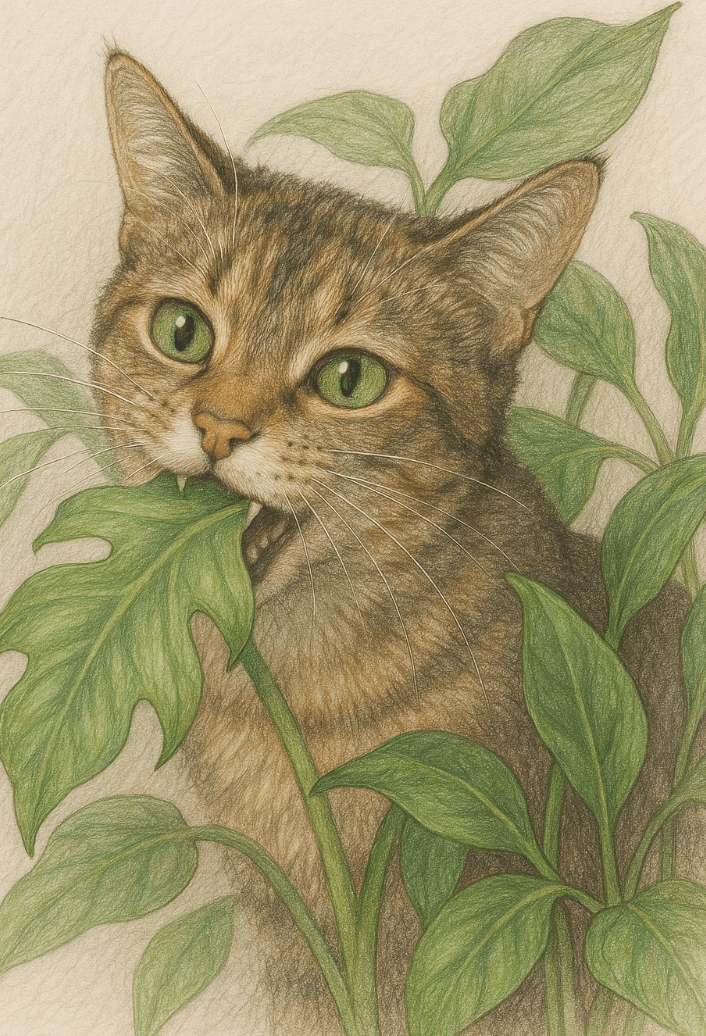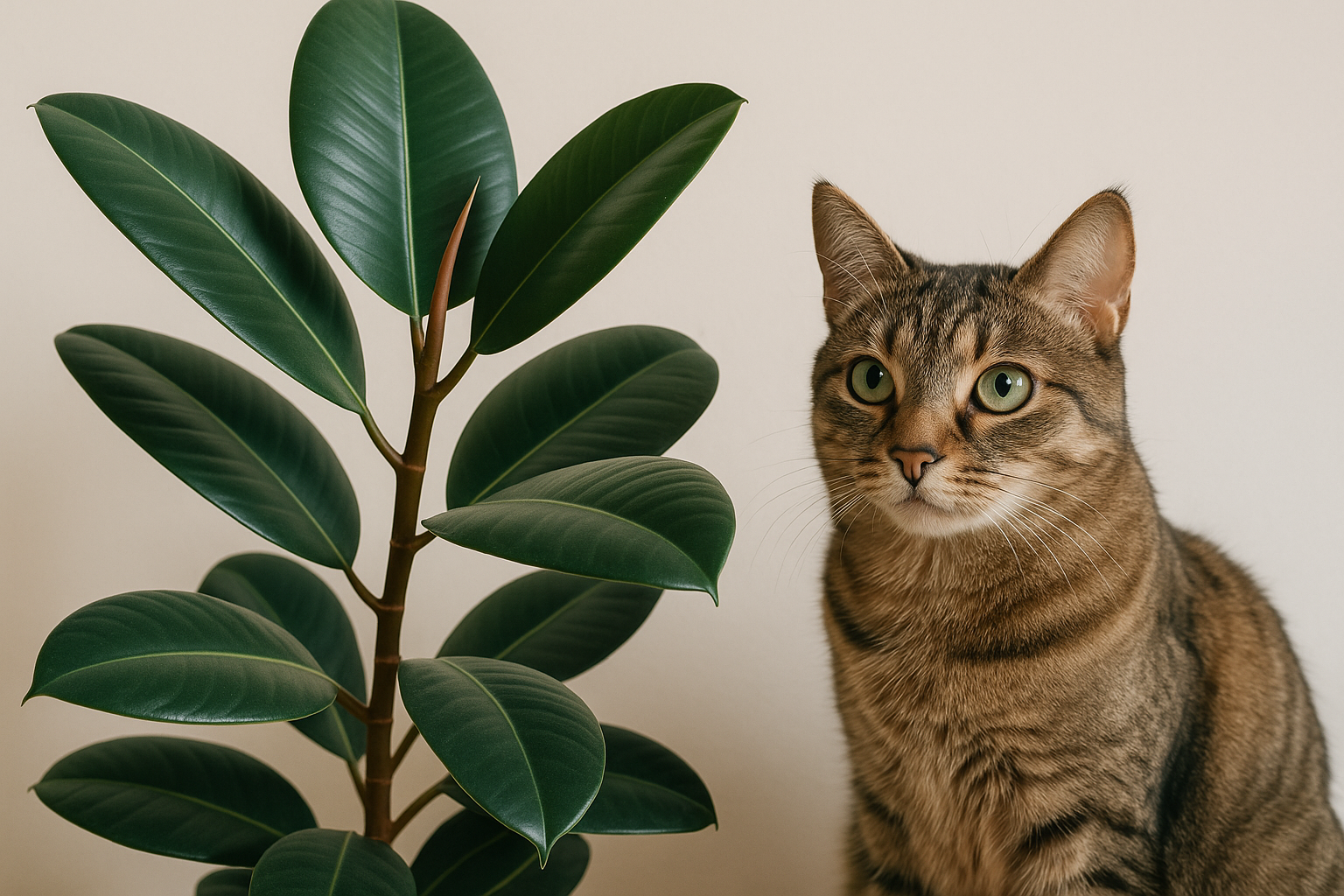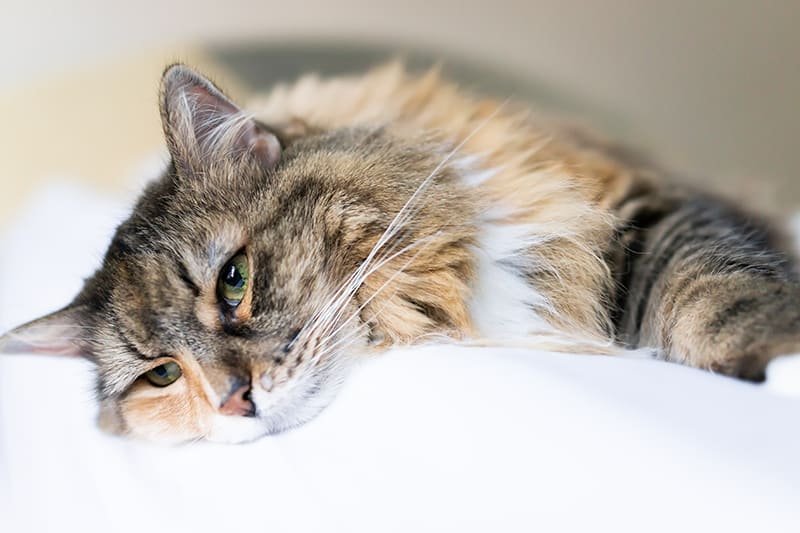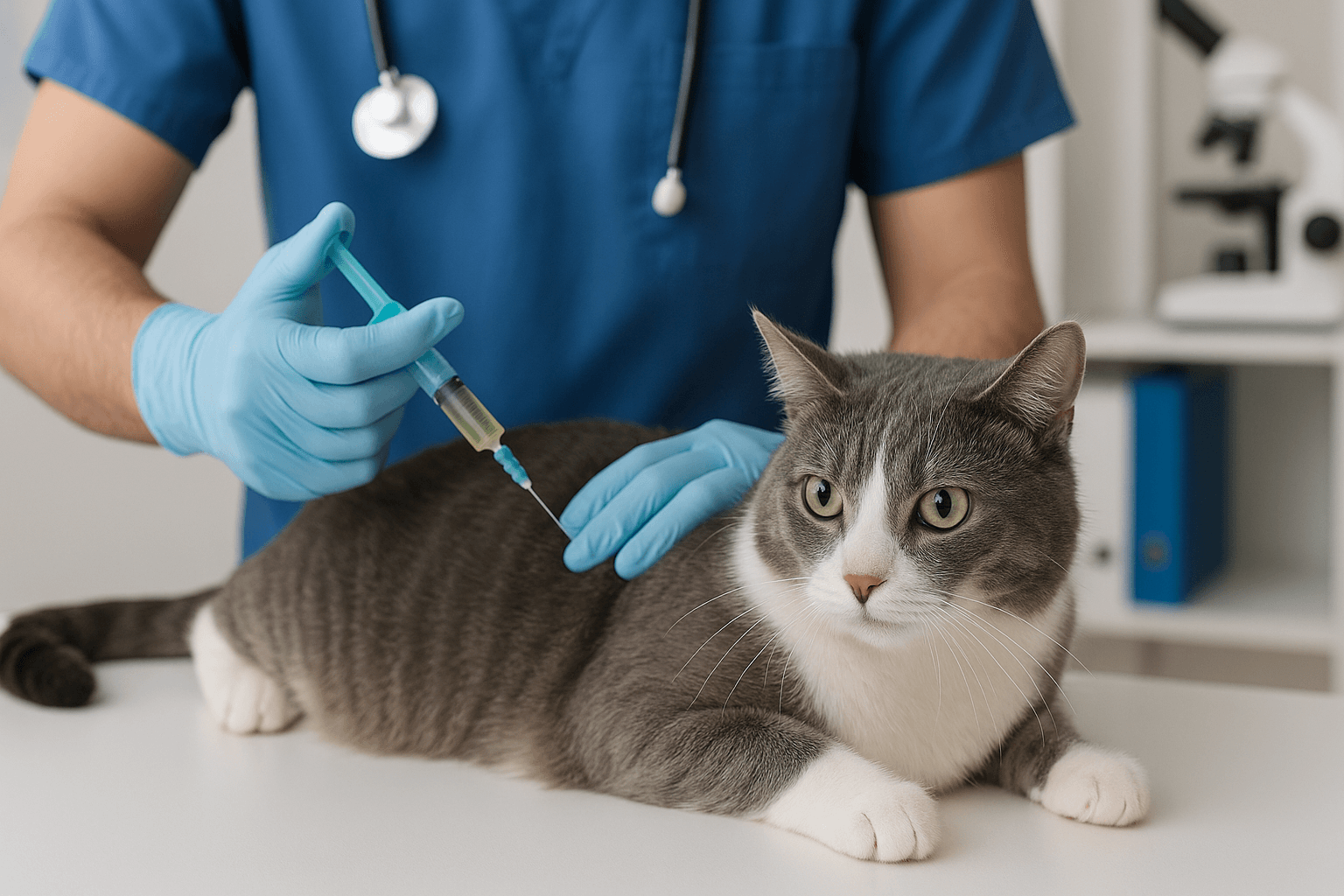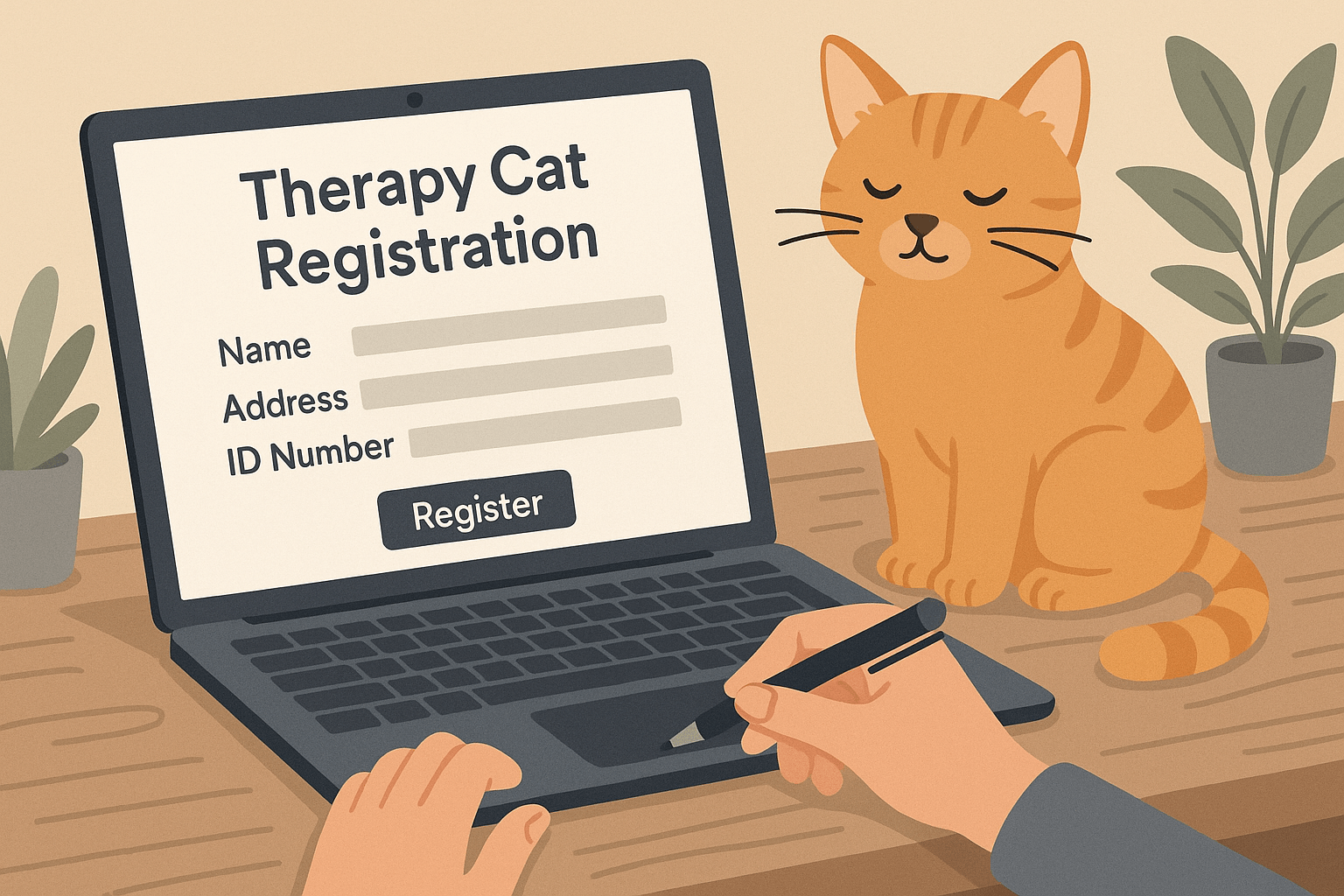Can Cats Eat Philodendron?
Philodendrons are popular houseplants known for their lush green leaves and easy care. However, if you’re a cat owner, you may be wondering whether these plants pose any risks to your feline friend. While cats are curious by nature and may nibble on household plants, not all vegetation is safe for them to consume. Philodendrons, in particular, contain toxic compounds that can harm cats if ingested. In this blog post, we’ll explore the potential dangers of philodendrons, signs of poisoning, and how to keep your cat safe while still enjoying your indoor greenery.
Why Philodendrons Are Toxic to Cats
Philodendrons belong to a group of plants that contain calcium oxalate crystals, which are harmful to cats. Understanding why these plants are dangerous can help you take steps to protect your pet.
Calcium Oxalate Crystals:
These needle-like structures irritate a cat’s mouth, throat, and digestive system when chewed or swallowed.Immediate Oral Irritation:
The crystals cause intense burning and swelling in the mouth, making it painful for cats to eat or drink.Potential for Vomiting:
Ingesting philodendron can lead to vomiting as the body tries to expel the toxic substance.Difficulty Swallowing:
Swelling in the throat may make it hard for your cat to swallow, leading to discomfort and distress.Risk of Excessive Drooling:
Cats may drool excessively as their bodies react to the irritation caused by the plant.
These factors highlight the importance of keeping philodendrons out of reach to prevent accidental ingestion.
Signs Your Cat May Have Eaten Philodendron
If you suspect your cat has nibbled on a philodendron, look for these symptoms of toxicity. Early recognition can help you seek prompt veterinary care.
Pawing at the Mouth:
Cats often paw at their mouths due to the burning sensation caused by calcium oxalate crystals.Excessive Drooling:
Drooling is a common reaction as the cat’s body attempts to soothe the irritated tissues.Vomiting or Gagging:
Your cat may vomit or gag as their digestive system reacts to the toxins.Loss of Appetite:
Pain and swelling in the mouth can discourage your cat from eating or drinking.Lethargy or Weakness:
If the poisoning is severe, your cat may appear unusually tired or weak.
Recognizing these signs early allows you to act quickly and minimize potential harm.
Check this guide 👉Can Cats Eat Aloe Vera Gel? Best 7 Expert Tips!
Check this guide 👉Can Cats Eat Shallots? Best 7 Expert Tips!
Check this guide 👉Can Cats Eat Valerian Root? Best 7 Expert Tips!
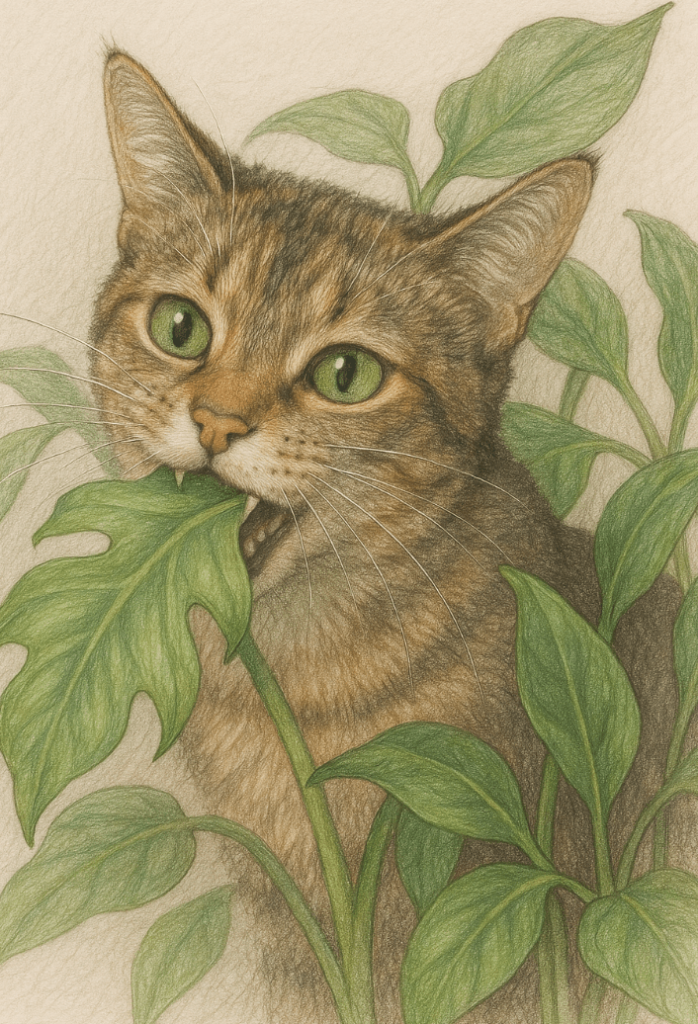
Safe Alternatives to Philodendron | Risks of Toxic Houseplants |
|---|---|
Spider Plant | Severe oral irritation |
Boston Fern | Difficulty swallowing |
African Violet | Excessive drooling |
Bamboo Palm | Risk of vomiting |
Calathea | Potential lethargy or weakness |
How to Keep Your Cat Safe Around Philodendrons
Prevention is key to ensuring your cat stays safe around philodendrons and other toxic plants. Follow these tips to create a pet-friendly environment.
Place Plants Out of Reach:
Hang philodendrons from ceilings or place them on high shelves where your cat cannot access them.Use Barriers or Enclosures:
Consider using plant stands with protective barriers or enclosures to block curious cats.Provide Cat-Friendly Plants:
Offer safe alternatives like cat grass or spider plants to satisfy your cat’s chewing instincts.Supervise Playtime Near Plants:
Keep an eye on your cat during playtime to prevent accidental ingestion of plant material.Educate Family Members:
Ensure everyone in the household understands the risks of philodendrons and how to keep cats safe.
Taking these precautions minimizes the risk of your cat coming into contact with harmful plants.
What to Do If Your Cat Eats Philodendron
If your cat ingests philodendron, acting quickly can make a significant difference in their recovery. Here’s what you should do in such a situation.
Remove Any Plant Material:
Gently check your cat’s mouth and remove any visible pieces of the plant to prevent further irritation.Rinse Their Mouth:
Use water to rinse your cat’s mouth, but avoid forcing them to drink if they’re resisting.Call Your Veterinarian:
Contact your vet immediately for advice on how to proceed based on the severity of the situation.Monitor Symptoms Closely:
Keep an eye on your cat for worsening symptoms like difficulty breathing or persistent vomiting.Avoid Home Remedies:
Refrain from giving your cat milk or other home remedies, as these may worsen the condition.
Prompt action and professional guidance are crucial for ensuring your cat recovers safely.
Common Mistakes to Avoid When Owning Toxic Plants
Many pet owners unintentionally put their cats at risk by overlooking certain safety precautions. Avoid these common mistakes to protect your furry friend.
Assuming Cats Won’t Be Interested:
Never assume your cat won’t chew on plants—curiosity often gets the better of them.Leaving Plants Within Reach:
Even if you think a plant is inaccessible, cats are excellent climbers and may find a way to reach it.Ignoring Early Warning Signs:
Delaying action after noticing symptoms of poisoning can lead to more serious health issues.Using Harmful Deterrents:
Some deterrent sprays or chemicals may be unsafe for pets; always choose pet-friendly options.Not Researching Plant Safety:
Failing to research whether a plant is toxic before bringing it home puts your cat at unnecessary risk.
Avoiding these pitfalls ensures a safer living space for your cat.
Alternative Ways to Satisfy Your Cat’s Chewing Instincts
Cats often chew on plants out of boredom or curiosity. Providing safe alternatives can redirect this behavior and keep them entertained.
Cat Grass:
Grow cat grass indoors—it’s safe for cats to nibble on and satisfies their natural urge to chew.Interactive Toys:
Puzzle feeders and chewable toys engage your cat mentally and physically, reducing interest in plants.Edible Herbs:
Offer cat-safe herbs like mint or parsley, which provide sensory stimulation without posing risks.Regular Playtime:
Spend quality time playing with your cat to tire them out and reduce destructive behaviors.Deterrent Sprays for Plants:
Use pet-safe deterrent sprays on toxic plants to discourage chewing without harming your cat.
These alternatives help channel your cat’s energy into safer activities.
Tips for Creating a Cat-Friendly Garden Indoors
If you’re passionate about plants but want to keep your cat safe, consider designing a garden that’s both beautiful and pet-friendly.
Choose Non-Toxic Plants:
Opt for species like bamboo, lavender, or marigolds, which are safe for cats and add variety to your decor.Use Hanging Planters:
Hang plants from the ceiling or wall-mounted hooks to keep them out of your cat’s reach.Create Physical Barriers:
Place plants behind glass partitions or in closed terrariums to prevent access.Incorporate Vertical Space:
Utilize shelves or tall furniture to display plants where cats can’t easily jump.Add Cat-Specific Zones:
Designate areas with cat trees or scratching posts near plants to distract them from chewing.
With thoughtful planning, you can enjoy a lush indoor garden while keeping your cat happy and healthy.
Frequently Asked Questions About Cats and Philodendrons
Are all philodendrons toxic to cats?
Yes, all varieties of philodendron contain calcium oxalate crystals and are harmful to cats.
What should I do if my cat chews on a philodendron leaf?
Remove the plant material from their mouth, rinse their mouth with water, and contact your vet immediately.
Can philodendron poisoning be fatal?
While rare, severe cases can lead to life-threatening complications if left untreated.
Are there safe houseplants for cats?
Yes, plants like spider plants, Boston ferns, and African violets are non-toxic and safe for cats.
How can I stop my cat from chewing on plants?
Provide cat-safe plants, use deterrent sprays, and redirect their attention with toys or interactive activities.
Protecting Your Cat While Enjoying Houseplants
While philodendrons add beauty and life to your home, they pose a significant risk to curious cats. By understanding the dangers of toxic plants and taking preventive measures, you can ensure your cat remains safe without sacrificing your love for greenery. Always prioritize your pet’s well-being by choosing cat-friendly plants and seeking immediate veterinary care if accidental ingestion occurs. With a little effort and awareness, you can create a harmonious environment where both you and your feline friend thrive.
Is the Rubber Tree Cat Safe? Best 7 Expert Tips! Discover expert advice on keeping rubber plants safely in cat-friendly homes and learn top tips for pet-safe plant care.
Low Red Blood Cell Count in Cats: Best 7 Expert Tips! Discover causes, symptoms, and treatment options for feline anemia. Learn how to support your cat’s health effectively with expert advice.
Understanding Megacolon Treatment: Best 7 Expert Tips! Discover effective strategies to manage feline megacolon, from dietary changes to surgical options, ensuring your cat’s comfort and long-term health.
How to Register a Therapy Cat: Best 7 Expert Tips! Discover essential steps to certify your cat as a therapy animal, prepare them for training, and make a meaningful impact in therapeutic settings.

